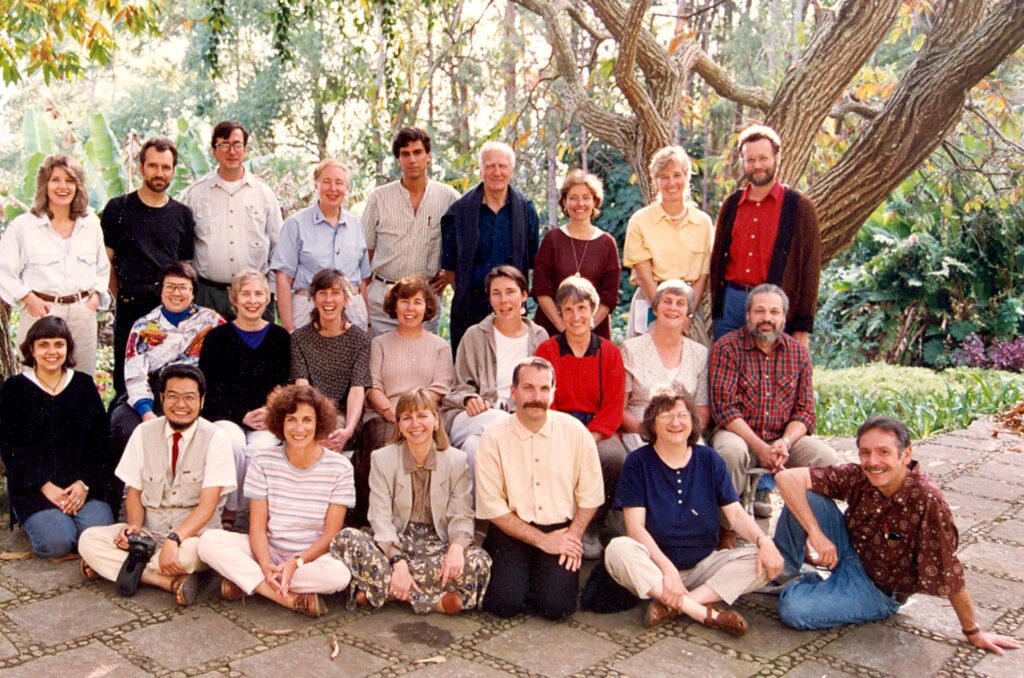Changing Images of Primate Societies: The Role of Theory, Method and Gender
Date
Jun 15-23, 1996Organized by
Linda Fedigan and Shirley StrumLocation
Hotel Rosa dos Ventos, Teresopolis, BrazilPublications
Primate Encounters: Models of Science, Gender, and Society (Shirley C. Strum and Linda Marie Fedigan, Eds.), University of Chicago Press, 2000.Participants
- Pamela Asquith University of Alberta, Canada
- Dick Byrne University of St. Andrews, UK
- Linda Fedigan University of Alberta, Canada
- Steve Glickman University of California, Berkeley, USA
- Donna Haraway University of California, Santa Cruz, USA
- Robert A. Hinde University of Cambridge, UK
- Sarah Blaffer Hrdy University of California, Davis, USA
- Alison Jolly Princeton University, USA
- Evelyn Fox Keller Massachusetts Institute of Technology, USA
- Bruno Latour École des Mines de Paris, France
- Gregg Mitman University of Oklahoma, USA
- Brian Noble University of Alberta, Canada
- Naomi Quinn Duke University, USA
- Thelma Rowell University of California, Berkeley, USA
- Sydel Silverman Wenner-Gren Foundation, USA
- Craig Stanford University of Southern California, USA
- Karen Strier University of Wisconsin, USA
- Shirley Strum University of California-San Diego, La Jolla, USA
- Robert Sussman Washington University, USA
- Hiroyuki Takasaki Okayama University of Science, Japan
- Zuleyma Tang-Martinez University of Missouri, USA
- Alison Wylie University of Western Ontario, USA
- Maria Emilia Yamamoto Universidade Federal do Rio Grande do Norte, Brazil
ORGANIZER’S STATEMENT: This symposium was designed to address two claims that have frequently been asserted but never systematically examined: that there have been significant shifts in the interpretation of primate society over the past few decades; and that women scientists have played a major role in bringing about these shifts. The conference employed a comparative and historical framework to bring empirical evidence to bear on these issues. The comparative dimension was provided by considering several disciplines closely related to primatology (anthropology, psychology, and zoology); perspectives from science studies, feminist studies, and popular culture studies; and different national traditions of primate studies. The participants focused on changes in theory, method, and societal concerns, on the role of increasing numbers of women in primatology, and on the interaction of science and society in popular culture and the media, to assess how these different factors have contributed to shifts in understandings of primate society. A broader objective of this symposium was to reflect on how and why scientists in general, and primatologists in particular, develop and change their perceptions of their subject matter.
Wenner-Gren Symposium #120
